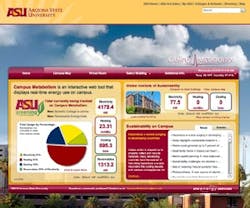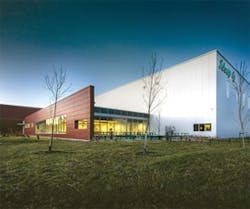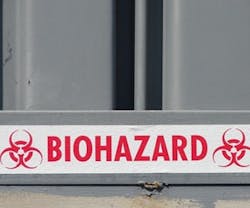Newsworthy
ASU Gets Greener with Visibility
To step up its energy accounting, Arizona State University (ASU) created an Energy Information System (EIS) and “Campus Metabolism” website. Robert Vandling, senior technology support analyst for ASU, discusses the campus’ green initiatives and their effect on campus energy use.
Buildings: What difficulties were there in implementing the EIS and Campus Metabolism? What were the benefits?
Vandling: As we developed and constructed Campus Metabolism, many challenges arose. How do you compare a residence hall that has a kitchen to one without a kitchen when sub-metering isn’t available? After many discussions, our final conclusion was to compare the building against itself rather than another building for the same time period of the previous year.
To date, the EIS has proven itself as an invaluable tool. With the ability to monitor the energy use of the Tempe Campus of Arizona State University from a single screen, we can quickly determine where we might have an energy problem. For example, if a heat exchanger fails, we can be notified instantly due to the increased usage rate of the steam feeding it. If left unnoticed, such things could end up costing the university tens of thousands of dollars in wasted energy.
Buildings: How does the students’ education affect their energy use on campus?
Vandling: Systems like Campus Metabolism help inform students of their energy usage in various buildings so they can be proactive in reducing their energy footprint.
For example, when they’re finished with a class, it helps them remember to turn off the lights. Or, in their dorm rooms, they don’t leave their air conditioners running when they’re gone.
Buildings: What additional sustainability/green initiatives is the campus taking part in?
Vandling: ASU is a leader among universities in its implementation of solar power plants. Currently, ASU has more than 2 MW of DC power being generated through renewable sources, such as wind and solar. During the next fiscal year, ASU plans to add another 8 MW of DC solar power, with more planned in the future.
Buildings: What recommendations do you have for other facilities managers who wish to control and monitor energy use?
Vandling: First and foremost, begin collecting as much data as you can. Without knowing where your energy is going, you can’t identify what you need to fix. With a solid baseline, you can see how a lighting retrofit, adding DDC controls, or adding VFDs to your pumping system can provide substantial savings to your utility budget.
PeopleCube Predicts 5 Business Trends for 2010
According to PeopleCube, a provider of intelligent workplace management technology, there are five business trends that will emerge or gain ground in 2010.
- Capturing Actual Real Estate Utilization
Cost savings abound when organizations pay only for the space they need and don’t pay to furnish, heat, cool, and/or light space that isn’t fully utilized. Income can also be generated by subletting underutilized space. - Workplace Business Intelligence
Workplace business intelligence (BI) technology helps an organization gain an accurate view of its current and future real estate needs by providing data and analysis of data that results in actionable information. - Alternative Workspace
More and more companies will reap economic and environmental benefits by implementing alternative workspace programs. - Video Conferencing
Improvements in, and increasing availability of, video conferencing technology, in conjunction with an increasingly mobile and geographically dispersed workforce, will cause video conferencing to grow. - SaaS Surge Continues
SaaS makes it easier to accommodate the growing needs of companies’ customer base, strengthens quality-assurance efforts, makes it easier to add product capabilities requested by customers, costs nothing to keep up-to-date, and has no hidden costs, such as hardware, annual maintenance fees, or internal support personnel.
ASHRAE Technology Awards for Innovative Building Projects
Recipients of the ASHRAE Technology Awards were recognized at ASHRAE’s 2010 Winter Conference held earlier this year. The recipients are:
New Commercial Building. The Terry Thomas, a 4-story office building in Seattle, was built without mechanical cooling. The building’s natural ventilation and hydronic heating system reduces energy consumption to 45.9 Kbtu per square foot per year.
Industrial Facilities. Sobey’s Warehouse in Trois-Riviéres, QC, uses an ammonia central chiller and glycol secondary distribution fluid system, and can operate in free cooling mode using the thermosiphon principle. Heat rejection from the warehouse chiller occurs simultaneously with space heating the office and common spaces.
Existing Commercial Buildings. The IDeAs Design Facility in San Jose, CA, is one of the world’s first net-zero-energy and zero-carbon- emission buildings. It was designed to use photovoltaics to meet 100 percent of its net energy requirements.
New Institutional Buildings. Loyola’s Richard J. Klarcheck Information Commons Building in Chicago uses automatically controlled operable windows to provide natural ventilation and an HVAC system that was designed to meet 60 percent of the design sensible cooling load.
Clorox Aids in Flu Prevention
Clorox is offering a free Flu Preparedness & Prevention Educational Kit this flu season to help professionals provide a healthier environment during peak flu season.
The Flu Preparedness & Prevention Educational Kit provides building owners and facilities managers with essential flu prevention information that may help prevent the spread of viruses in their facilities, says Sally Ann Friedman, marketing associate at Clorox. “It’s important for public places, such as buildings, to keep germ prevention top-of-mind all year long since many people pass through and share surfaces daily,” she says. “It’s even more critical to implement flu prevention protocols during peak flu activity months — typically January or later.”
The kits are available in these six categories:
- Office and workplace
- Mass transit, airports, and public places
- Health clubs
- K-12 schools
- Colleges and universities
- General use
The kits contain informational posters, brochures, and checklists to assist professionals with flu prevention.
Friedman recommends communicating important flu prevention protocols with employees and patrons year-round, especially in peak flu activity months, and placing germ-killing products throughout facilities.
Visit www.CloroxProfessional.com/H1N1 for more information or to download a free Flu Preparedness & Prevention Educational Kit.
EPA Holds Businesses Accountable
Failing to disclose hazards, whether it’s lead-based paint or the storage of chemicals, can be costly.
Earlier this year, the EPA reported that a Rhode Island landlord failed to provide lead disclosure information to tenants. The EPA is seeking up to $11,000 for each of the four violations.
Federal law requires property owners, property managers, and real estate agents leasing multi-family housing built before 1978 to provide a pamphlet, a lead warning statement, statements disclosing any known lead-based paint and lead-based paint hazards, and copies of all available records or reports concerning lead-based paint and lead-based paint hazards to tenants before they enter into leases or purchase and sales agreements.
Failing to disclose the information violates the Disclosure Rule, which is in place to give tenants adequate information about the risks associated with lead paint so they can make an informed decision before signing a lease.
A company in Seattle settled with the EPA earlier this year and agreed to pay more than $13,000 as a penalty for violating the federal Emergency Planning and Community Right-to-Know Act. The company failed to properly report the storage of sulfuric acid. Facilities storing a significant quantity of certain hazardous chemicals are required to submit an inventory of each chemical to several organizations. Emergency responders rely on this information for their safety and to help protect nearby residents during an emergency.




